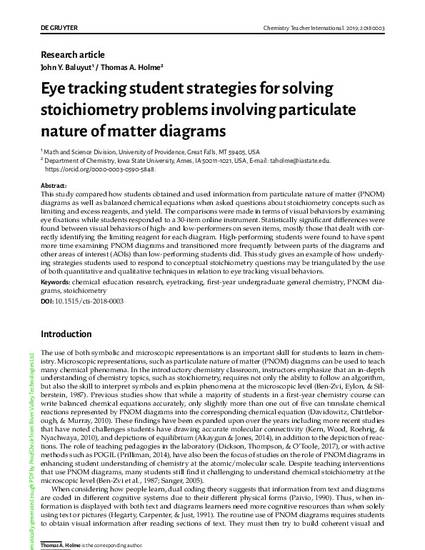
This study compared how students obtained and used information from particulate nature of matter (PNOM) diagrams as well as balanced chemical equations when asked questions about stoichiometry concepts such as limiting and excess reagents, and yield. The comparisons were made in terms of visual behaviors by examining eye fixations while students responded to a 30-item online instrument. Statistically significant differences were found between visual behaviors of high- and low-performers on seven items, mostly those that dealt with correctly identifying the limiting reagent for each diagram. High-performing students were found to have spent more time examining PNOM diagrams and transitioned more frequently between parts of the diagrams and other areas of interest (AOIs) than low-performing students did. This study gives an example of how underlying strategies students used to respond to conceptual stoichiometry questions may be triangulated by the use of both quantitative and qualitative techniques in relation to eye tracking visual behaviors.
Available at: http://works.bepress.com/thomas_holme/48/

This article is published as Baluyut, John Y., and Thomas A. Holme. "Eye tracking student strategies for solving stoichiometry problems involving particulate nature of matter diagrams." Chemistry Teacher International (2019): 20180003. DOI: 10.1515/cti-2018-0003. Posted with permission.